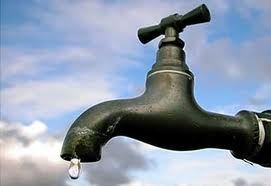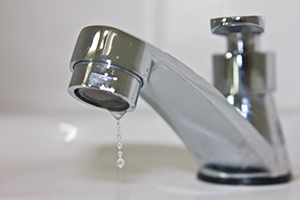Understanding the Significance of a Busted Faucet
Understanding the Significance of a Busted Faucet
Blog Article
Are you currently looking for guidance around Here's How to Fix a Leaky Faucet?

Introduction
A leaky faucet may look like a small annoyance, but its consequences expand far past the occasional drip. Comprehending the results of a leaky faucet is important for both home owners and the setting. In this post, we'll discover the numerous influences of this common family problem and why addressing it immediately is vital.
Root Causes Of Leaky Faucets
Leaking faucets can result from a variety of variables, including wear and tear, high water pressure, and corrosion. Over time, the constant use faucets can cause worn-out seals and gaskets, creating leakages to establish. In addition, excessive water pressure can put strain on plumbing components, causing leakages. Rust and corrosion can also weaken tap parts, making them vulnerable to leak.
Water Wastage
One of one of the most considerable effects of a dripping faucet is water wastefulness. Also a tiny drip can add up to gallons of drainage gradually. This not only increases water costs yet likewise contributes to water deficiency and ecological deterioration. Dealing with dripping faucets without delay is important for conserving this priceless resource and reducing its effect on the world.
Financial Impact
Along with drainage, leaky taps can additionally have a considerable economic influence. Raised water expenses are a straight repercussion of water wastage, setting you back house owners hundreds of dollars annually. Moreover, the cost of fixing water damage triggered by leakages can be significant, specifically if left unattended for an extensive period.
Environmental Impact
The ecological effect of leaky taps prolongs beyond water wastage. By conserving water, property owners can add to wider efforts to mitigate water shortage and secure natural ecological communities. Sustainable alternatives such as rain harvesting and water-efficient fixtures can further reduce the environmental impact of family water usage.
Technological Solutions
Advancements in modern technology have resulted in the development of smart faucets and water-saving tools that help minimize water wastage. Smart taps make use of sensing units to spot activity and adjust water circulation accordingly, lowering waste without sacrificing ease. Water-saving devices such as aerators and low-flow showerheads are also efficient in saving water without jeopardizing performance.
International Viewpoints
While leaky taps might seem like a local concern, they contribute to more comprehensive global challenges such as water deficiency and climate change. In regions already encountering water stress, every decrease counts, making leak avoidance and repair service essential. By adopting water-saving methods and buying lasting technologies, homeowners can play their part in attending to these pushing global problems.
Regulatory Procedures
Federal government guidelines play a crucial duty in minimizing the influence of dripping taps and advertising water conservation. From developing codes that need water-efficient components to water-saving rewards and discounts, policymakers have a range of tools at their disposal. By carrying out and implementing these regulations, governments can guarantee that property owners focus on water preservation in their lives.
Community Effect
Attending to leaking taps needs cumulative efforts at the community level. By raising awareness regarding the importance of water preservation and providing resources for leakage discovery and repair work, neighborhood authorities can empower property owners to act. Initiatives such as water-saving rebate programs and leakage discovery projects can incentivize behavior change and promote accountable water use.
Situation Studies
Real-life examples of the impact of leaky faucets highlight the significance of aggressive upkeep and timely fixings. From water damages to escalating water expenses, the repercussions of neglecting leakages can be serious. By sharing these case studies, house owners can better understand the relevance of resolving dripping taps promptly.
Educational Campaigns
Educational campaigns play an essential function in increasing awareness concerning the effects of dripping faucets and promoting water conservation methods. Through workshops, seminars, and online sources, homeowners can learn how to find and repair leaks themselves. By encouraging people with knowledge and devices, educational projects can cultivate a culture of liable water usage within communities.
Wellness Concerns
Dripping faucets can create conducive atmospheres for mold and mold growth, presenting health risks to owners. The presence of mold can worsen respiratory system problems and allergies, especially in susceptible people. Furthermore, water damage resulting from leakages can compromise the structural honesty of buildings and lead to costly repair work.
DIY vs. Professional Repair work
When faced with a dripping faucet, property owners frequently dispute whether to attempt repairs themselves or work with a professional plumber. While do it yourself repair services can conserve money, they might not constantly deal with the hidden problem effectively. Professional plumbing technicians have the know-how and equipment to detect and repair leakages correctly, making sure long-lasting services and comfort for house owners.
Safety nets
Stopping leaky taps needs routine upkeep and aggressive actions. Easy jobs such as changing worn-out washing machines and seals can avoid leakages from creating. In addition, upgrading to top quality fixtures and reducing water stress can assist prolong the life expectancy of taps and minimize the risk of leakages.
Final thought
To conclude, the results of a dripping tap extend far past the occasional drip. From water waste and raised water bills to health and wellness worries and environmental effect, the consequences of ignoring leakages can be significant. By dealing with dripping taps promptly and adopting water-saving techniques, homeowners can reduce these impacts and contribute to a much more sustainable future.
Why You Shouldn’t Ignore a Leaky Faucet in Your Home
What Causes a Leaky Faucet?
Various factors can cause a leak, from loose and worn-out parts to corrosion. Your faucet has four essential components from which most plumbing issues will stem: the O-ring, the valve seat, the washer and the gasket.
What Is an O-Ring?
The O-ring is a stem screw that fastens parts of the faucet in place, preventing water from leaking out of the spout. Depending on your faucet type, the stem might have multiple O-rings. Water will drip from the faucet’s handles and base if this part breaks or deteriorates.
What Is a Valve Seat?
The valve seat controls the flow and temperature of the water. Found at the base of the handle, it works as a seal for the faucet’s stem. The valve seat ensures the water is allowed to flow or is blocked as the handles dictate. You’ll know it’s malfunctioning when water leaks from your faucet’s sides.
What Is a Gasket?
The gasket is found between the water inlet and the valve stem. It creates a seal between the faucet and the sink, holding its joints by aerators attached to the stem’s head. Water will trickle out from the base if the gasket isn’t working.
What Is a Washer?
The washer secures the handles and prevents leakage, serving a similar purpose to the O-ring. While the O-ring is ordinarily round and made from an elastic material, such as rubber, the washer is square-shaped and composed of brass, copper and other hard metals. If it malfunctions, corrodes or has been improperly installed, water will leak out of the handles, causing that incessant faucet drip.
Why Is a Leaky Faucet Dangerous?
A leaky faucet left alone for too long can have significant consequences.
Pest Infestations
Since bugs and rodents gravitate towards the scent of water, a leaky faucet will draw pests to your sink. Both are looking for leaks accessible through crawl spaces, which a faucet provides. If you leave water dripping for too long, you run the risk of an infestation.
Rust
If one of the faucet parts has started to corrode, the resulting rust can spread to your pipes and valves with startling speed. The rust might even lead to cracks or other impairments, resulting in more severe plumbing issues.
Your sink could also sustain damage from a leaky faucet. The water in your tap possesses sparse elements of calcium and iron that can stain your sink with repeated and prolonged exposure. Once those elements in the water have been open to the air for some time, your sink will start to rust, creating marks that can be difficult to remove.
https://www.tomsmechanical.com/blog/why-you-shouldnt-ignore-a-leaky-faucet-in-your-home

We had been shown that article on How to Fix a Leaky Faucet through someone on a different site. Do you know another person who is enthusiastic about the niche? Do not hesitate to share it. Thanks for taking the time to read it.
Report this page